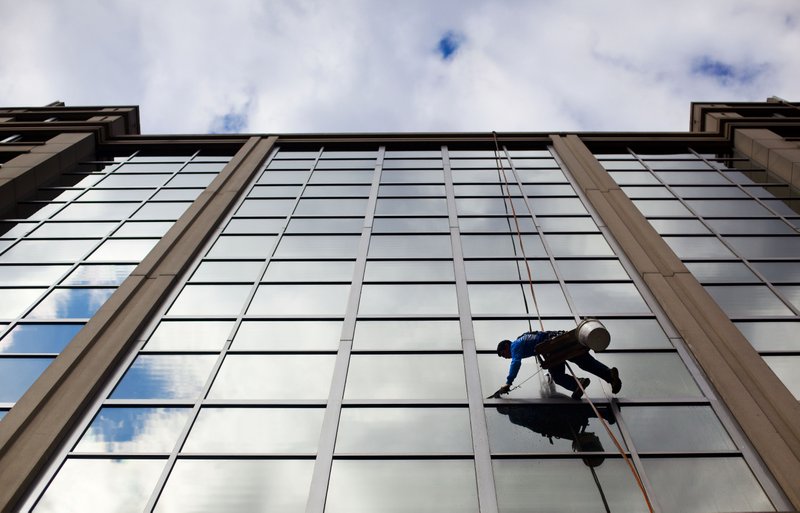WASHINGTON -- U.S. employers added 280,000 jobs in May, another sign to analysts that the economy has regained momentum after starting 2015 in a deep slump.
The unemployment rate ticked up to 5.5 percent from 5.4 percent in April, the Labor Department said Friday. But that occurred for a good reason: Hundreds of thousands more people began seeking jobs in May. Not all of them found work, so they were counted as unemployed.
Last month's strong job growth reflects a vote of confidence by employers, a sign that they foresee a broader rebound for the U.S. economy after it shrank during the first three months of the year. The government also revised up its estimate of job growth during March and April by a combined net 32,000.
The steady hiring should drive the economy through the rest of the year, overcoming the drags caused by a stronger dollar hurting exports and cheaper oil cutting into energy industry revenue.
"We've restored income for well over 3 million people over the past 12 months, and that's adding a lot of spending power to the economy," said Carl Tannenbaum, an economist at Northern Trust.
Construction, health care and hospitality companies drove the May job growth. On the negative side, persistently cheaper oil led energy companies to shed workers for a fifth straight month.
The average hourly wage rose 2.3 percent from a year earlier, showing some pickup. Pay is barely rising above inflation, a persistent trend that has limited the economy's growth. But the average hourly wage is now approaching $25, a level that appears to be bringing unemployed workers hurt by the 2008 financial crisis and sluggish recovery back into the job market.
The percentage of people with jobs or searching for work increased to 62.9 percent in May, up a tenth of a percentage point.
"Even the modest gains are pulling in some of the people on the sidelines," said Ryan Sweet, an economist at Moody's Analytics.
Stock investors are processing what the job growth means for the economy and the policies of the Federal Reserve, which is expected to raise interest rates from record lows at some point this year.
Federal Reserve Chairman Janet Yellen has said she expects the Fed to raise rates this year if the economy continues to improve, ending nearly seven years of record-low rates.
On Thursday, though, the International Monetary Fund suggested that the Fed should hold off on raising rates until 2016. IMF Managing Director Christine Lagarde, saying a rate increase could disrupt the economy, urged the Fed to await signs of healthy wage growth.
"This evident strength in the labor market probably isn't enough to persuade the Fed to hike rates in July, but it leaves a September liftoff looking more likely than ever," said Paul Ashworth, chief U.S. economist at Capital Economics. "Only 24 hours later, the IMF's suggestion that the Fed should wait until 2016 looks very dated."
Though employers continue to hire freely, consumers -- the main engine of the U.S. economy -- remain fairly cautious. Still, Friday's solid jobs report confirms the economy's vitality.
The 3 million new paychecks added over the past year have helped raise spending on housing and autos. Sales of newly built homes have surged 23.7 percent through the first four months of 2015 compared with a year ago, government data show. Rising demand for new homes led construction firms to hire 17,000 workers in May.
Americans bought 1.64 million vehicles in May, the most since July 2005. Manufacturers added 7,000 jobs last month, primarily in the auto sector.
Retailers added 31,400 employees, health care companies 57,700. The leisure and hospitality industry, which includes restaurants, added 57,000.
The weekly number of people applying for unemployment benefits -- a proxy for layoffs -- has remained under a historically low 300,000 for more than four months. By holding on to nearly all their workers, businesses are ensuring that they will have the capacity to respond to greater customer demand.
But the economy faces other challenges. The dollar has appreciated about 19 percent in the past year against other major currencies. That trend has made U.S. goods costlier overseas, thereby squeezing exports and the U.S.-based branches of foreign companies.
Nor has cheaper gasoline delivered much help. Instead of sparking the wave of consumer spending that many economists had expected, a nearly 45 percent drop in oil prices since July has damaged a U.S. economy increasingly reliant on energy drilling. The energy industry has let go of workers and cut orders for pipelines and equipment.
The mining sector, which includes oil and gas, trimmed 17,200 workers from their payrolls last month.
Falling unemployment usually leads to fewer people seeking work, forcing employers to increase wages. But plenty of people are still searching for jobs.
Companies often increase pay when their workers become more productive. Yet productivity fell at a 3.1 percent annual rate in the first quarter -- a sharper drop than the decline estimated a month ago, the government said Thursday.
Information for this article was contributed by Christopher S. Rugaber of The Associated Press.
Business on 06/06/2015
